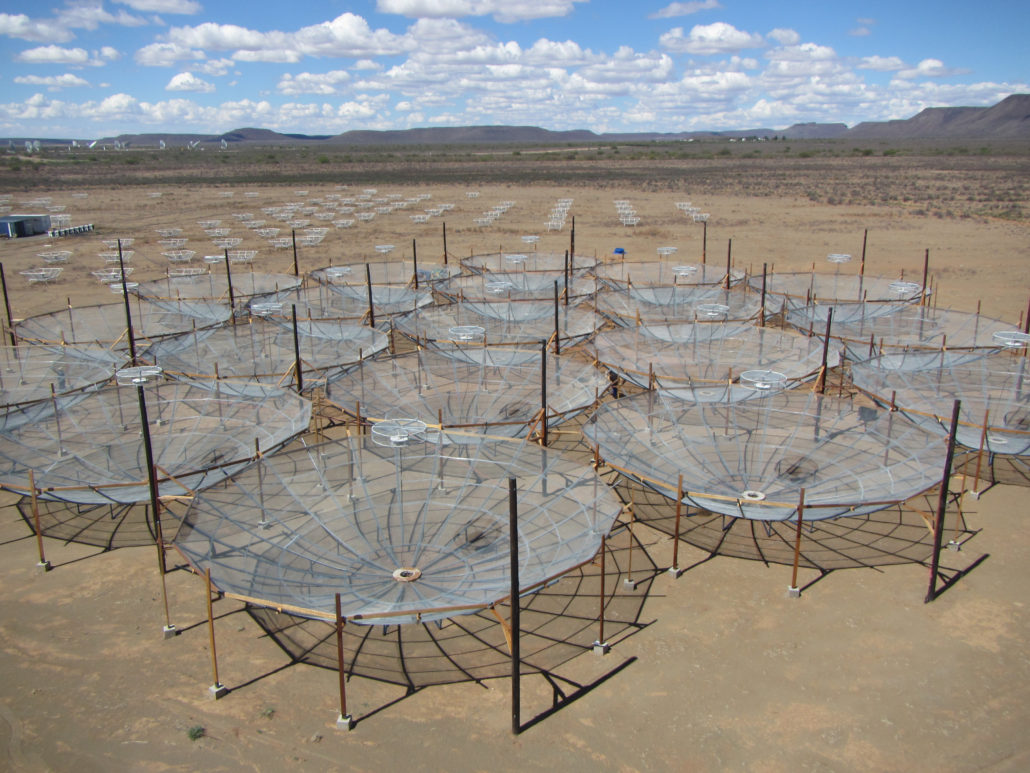
ASTRON has enlisted the help of
IBM to lead a five-year, $43 million project to develop and build a supercomputer for the new
Square Kilometer Array. The SKA is a $2.1 billion initiative to construct the world's largest radio telescope across a 3,000km strip of Australia or South Africa. It's hoped to be around 50 times as powerful as the dishes we currently point heavenward and will be used to examine the deepest reaches of space to learn more about the formation of the universe. When it goes live in 2024, it'll produce an Exabyte of data
each day: twice as much information as there is traffic on the internet in the same period. Of course, no existing computer could handle the job, so Big Blue has a slim 12 years in which to turn nascent technologies like Nanophotonics,
3D chip stacking and
phase change memory amongst others into a practical, workable
Exascale computer. Its either that, or somehow daisy-chain 100 million PCs with enough power and cooling fans to keep it all working and hope for the best. If you'd like to know more, then head on past the break, although unfortunately it won't count as college credit.
Continue reading IBM: 'We must build an Exascale computer before 2024' (video)
IBM: 'We must build an Exascale computer before 2024' (video) originally appeared on Engadget on Mon, 02 Apr 2012 05:06:00 EDT. Please see our terms for use of feeds.
Permalink | |
Email this |
Comments
 Another piece of the Square Kilometer Array's puzzle just fell into place. South Africa has officially switched on MeerKAT, billed as the most sensitive radio telescope of its type on the planet. Some parts of the array have been gathering data, but...
Another piece of the Square Kilometer Array's puzzle just fell into place. South Africa has officially switched on MeerKAT, billed as the most sensitive radio telescope of its type on the planet. Some parts of the array have been gathering data, but...
 Another piece of the Square Kilometer Array's puzzle just fell into place. South Africa has officially switched on MeerKAT, billed as the most sensitive radio telescope of its type on the planet. Some parts of the array have been gathering data, but...
Another piece of the Square Kilometer Array's puzzle just fell into place. South Africa has officially switched on MeerKAT, billed as the most sensitive radio telescope of its type on the planet. Some parts of the array have been gathering data, but...
 When it first went online in February 2016, the Hydrogen Epoch of Reionization Array (HERA) radio telescope in South Africa boasted 19, 42-foot-diameter antennas aimed at the "Cosmic Dawn" of the universe. The antennas are designed to detect a specif...
When it first went online in February 2016, the Hydrogen Epoch of Reionization Array (HERA) radio telescope in South Africa boasted 19, 42-foot-diameter antennas aimed at the "Cosmic Dawn" of the universe. The antennas are designed to detect a specif...




